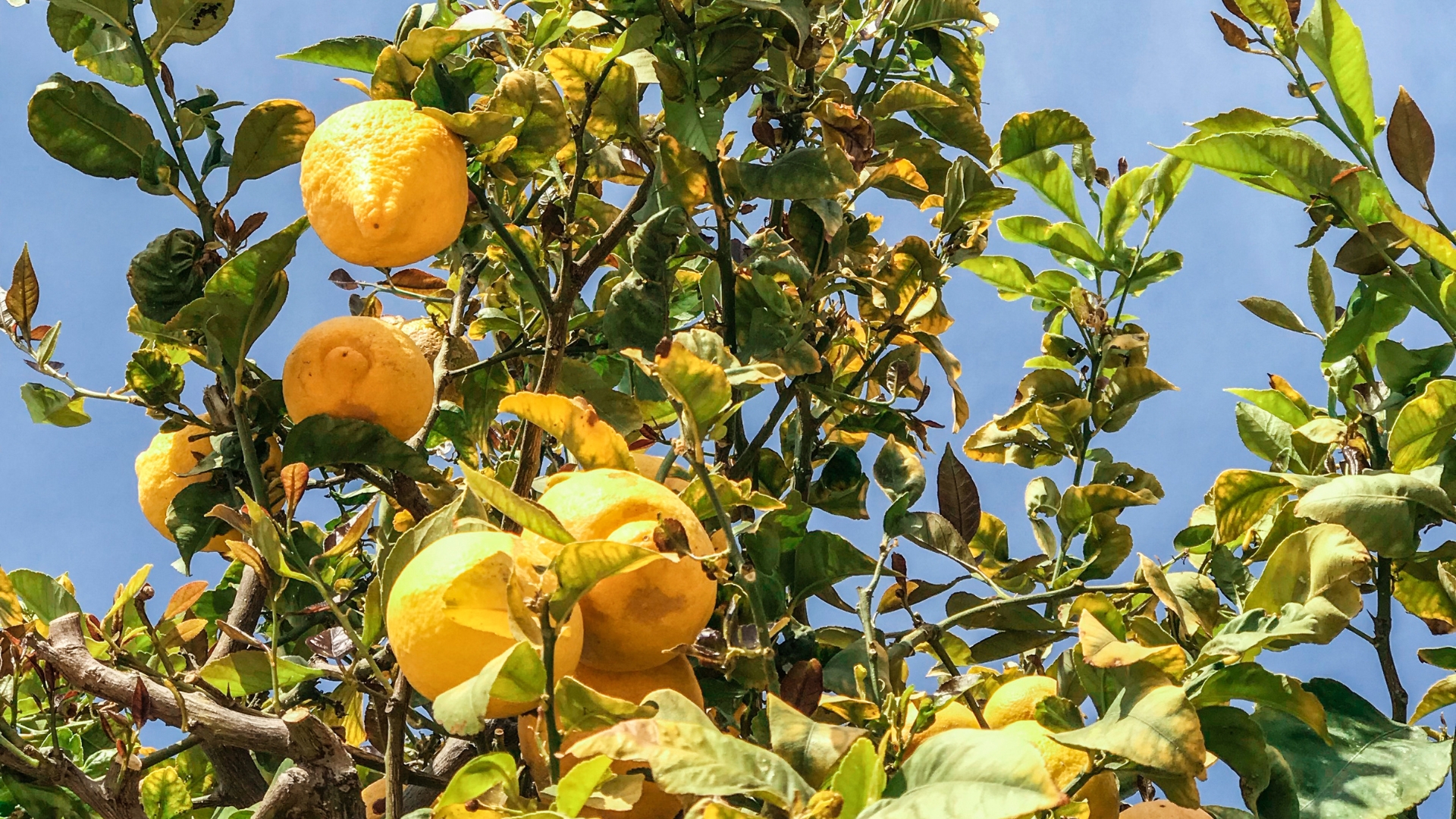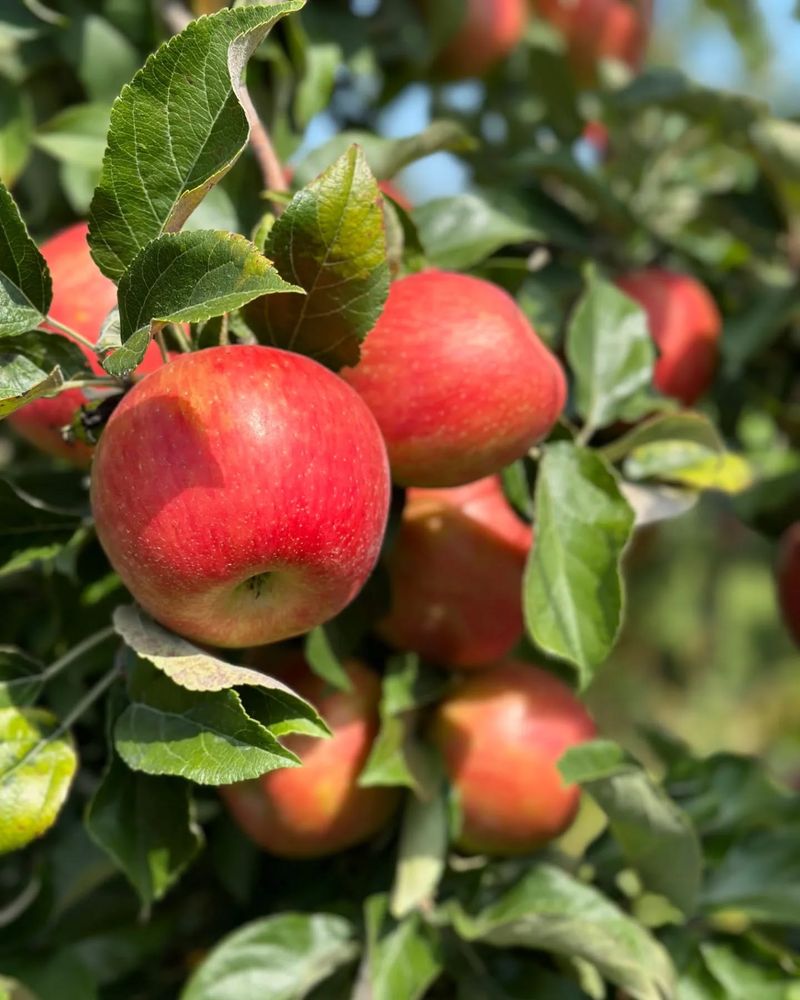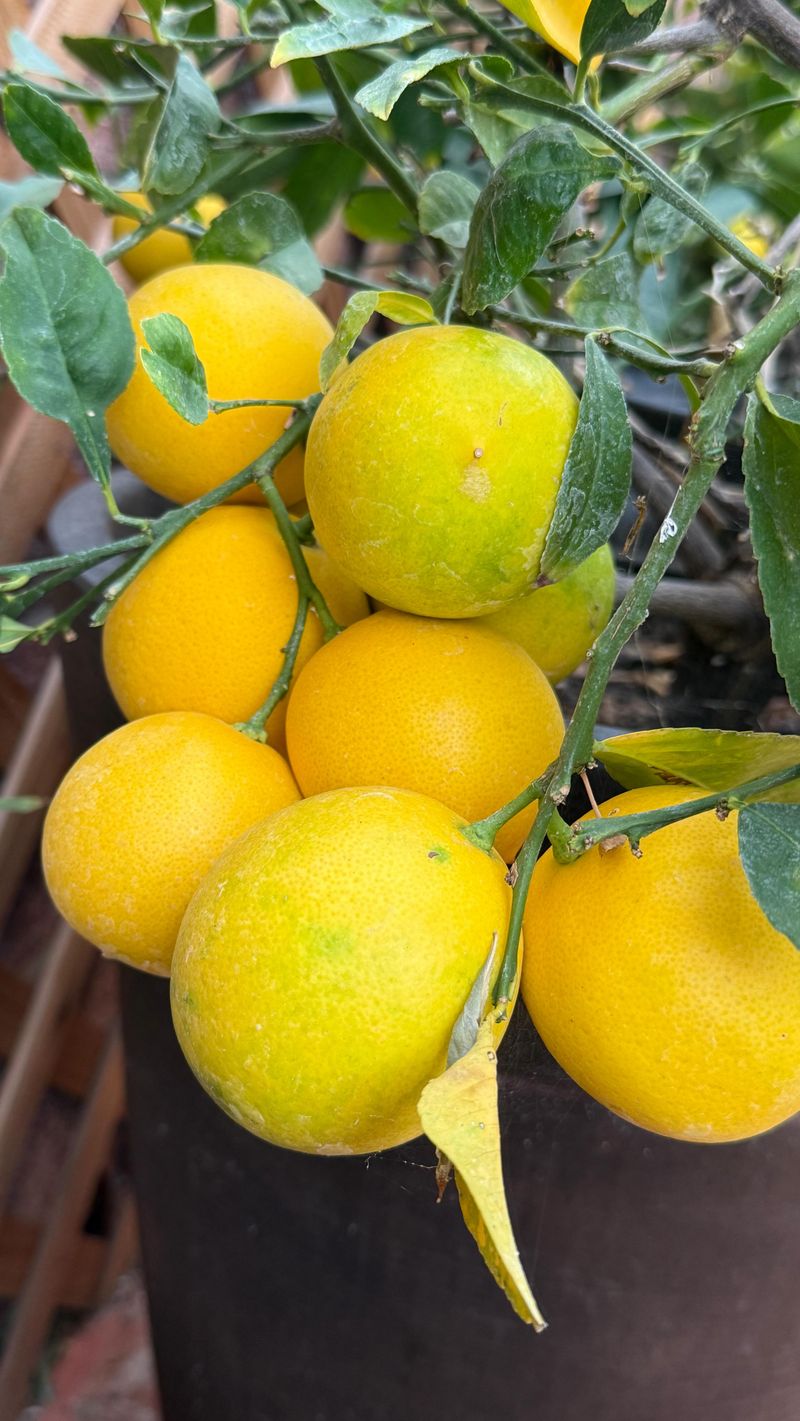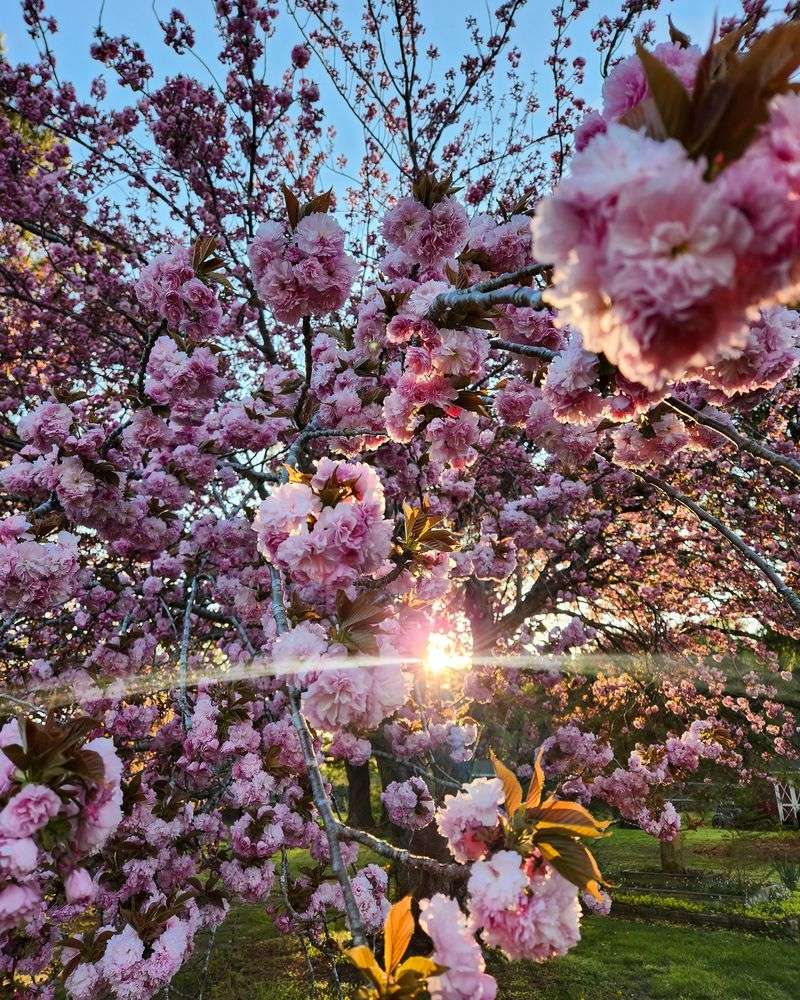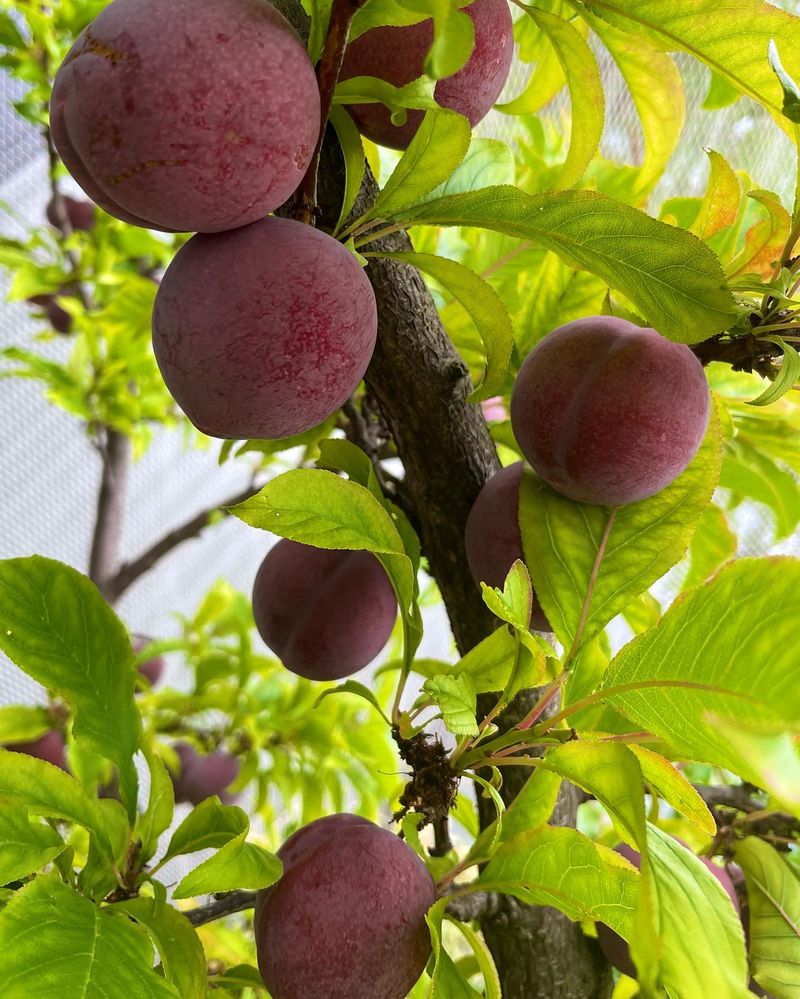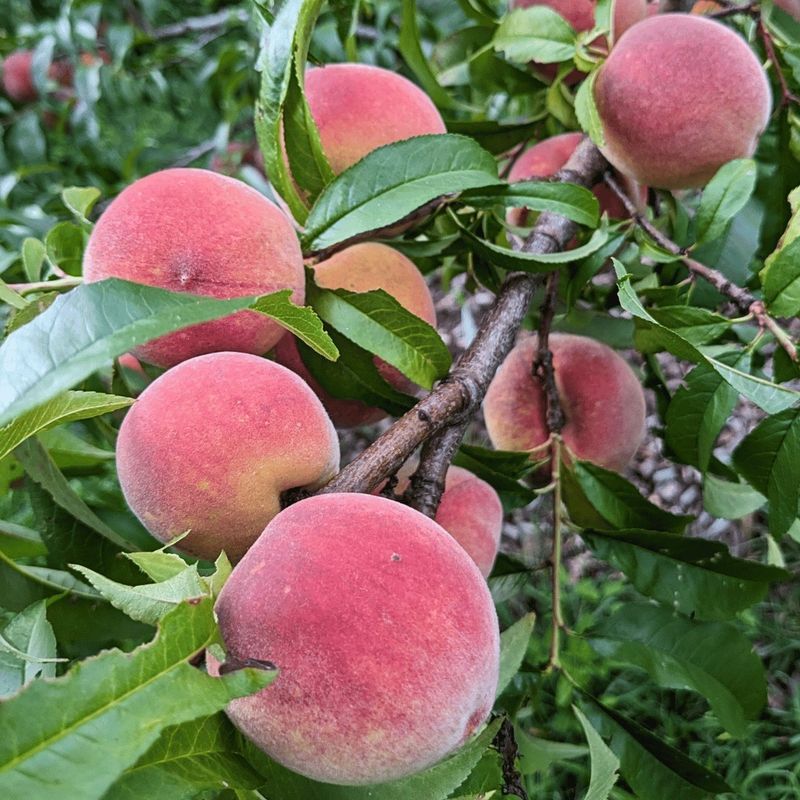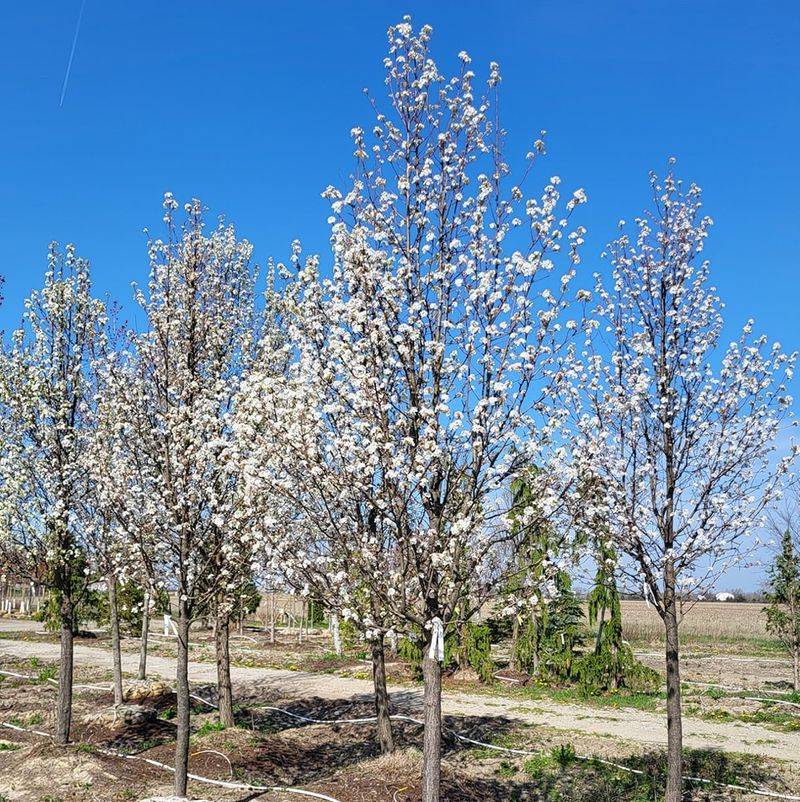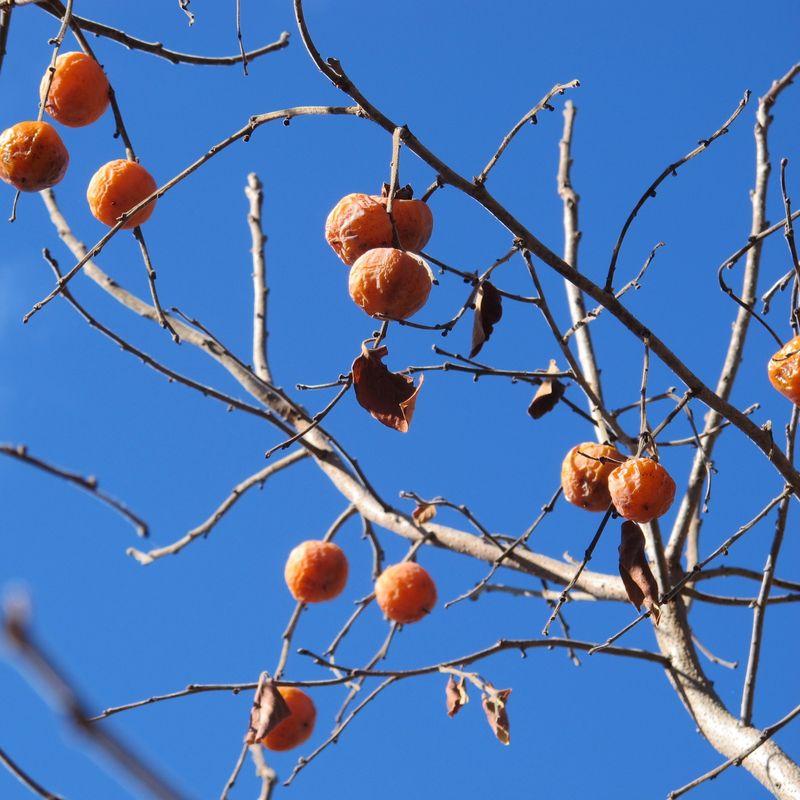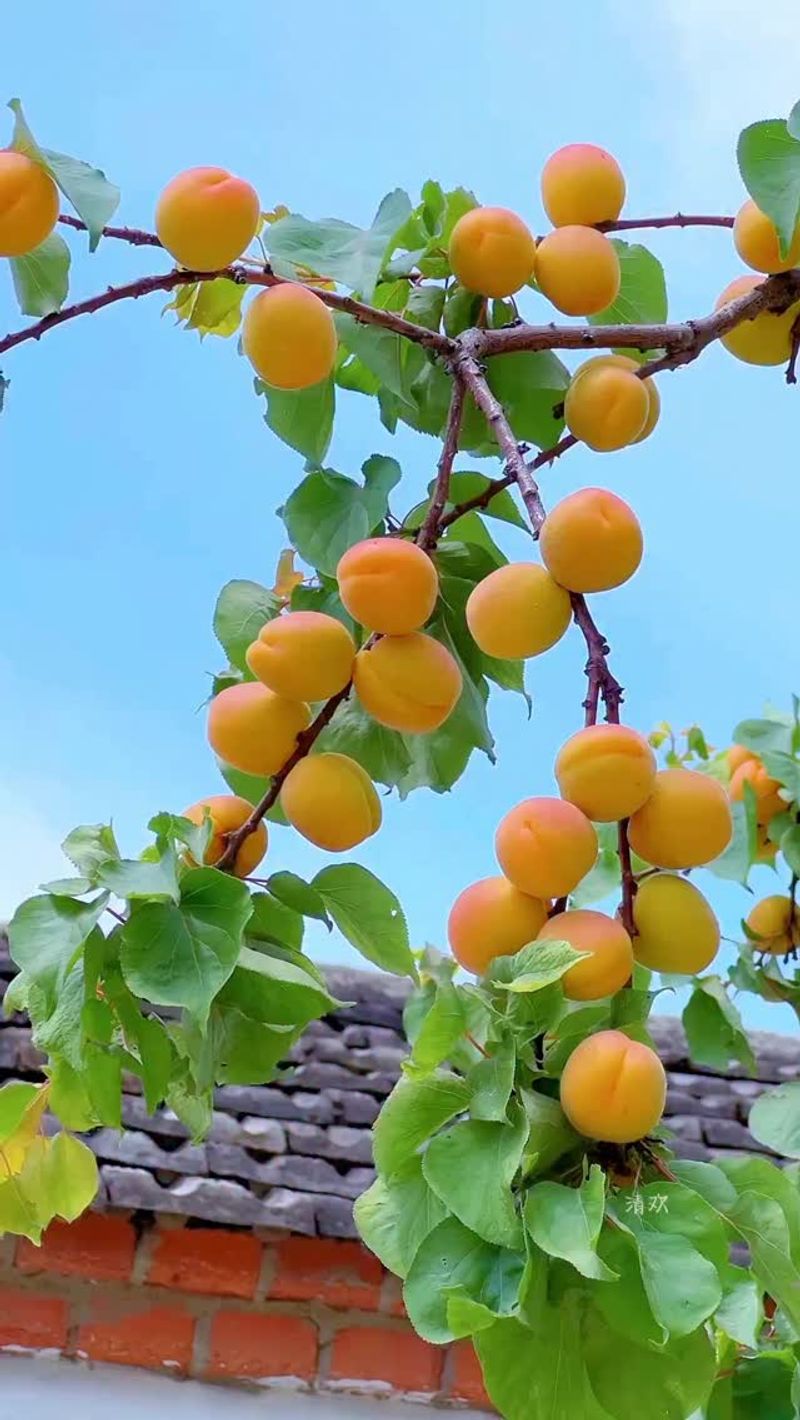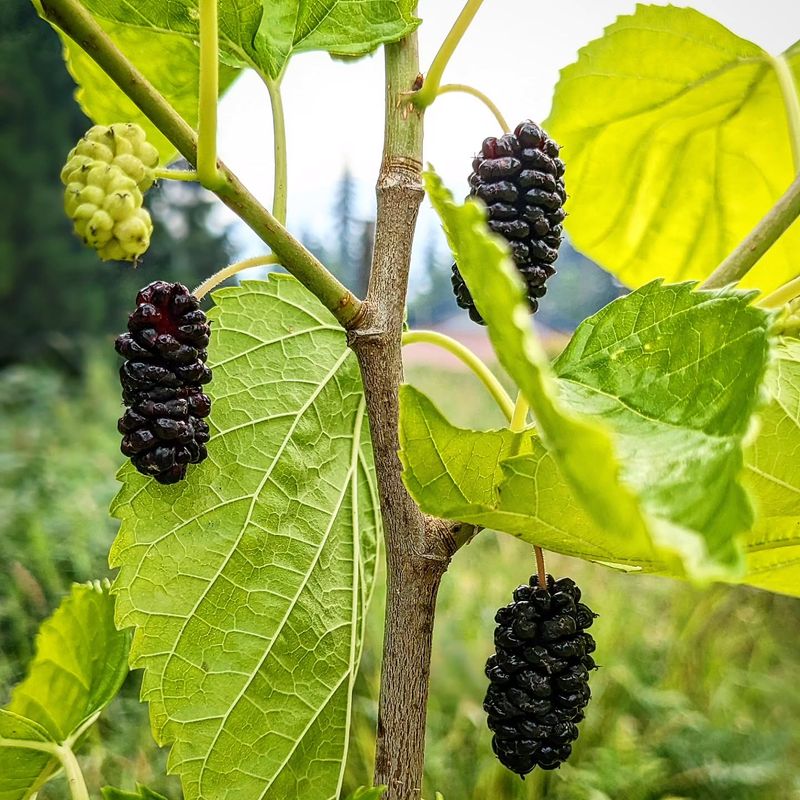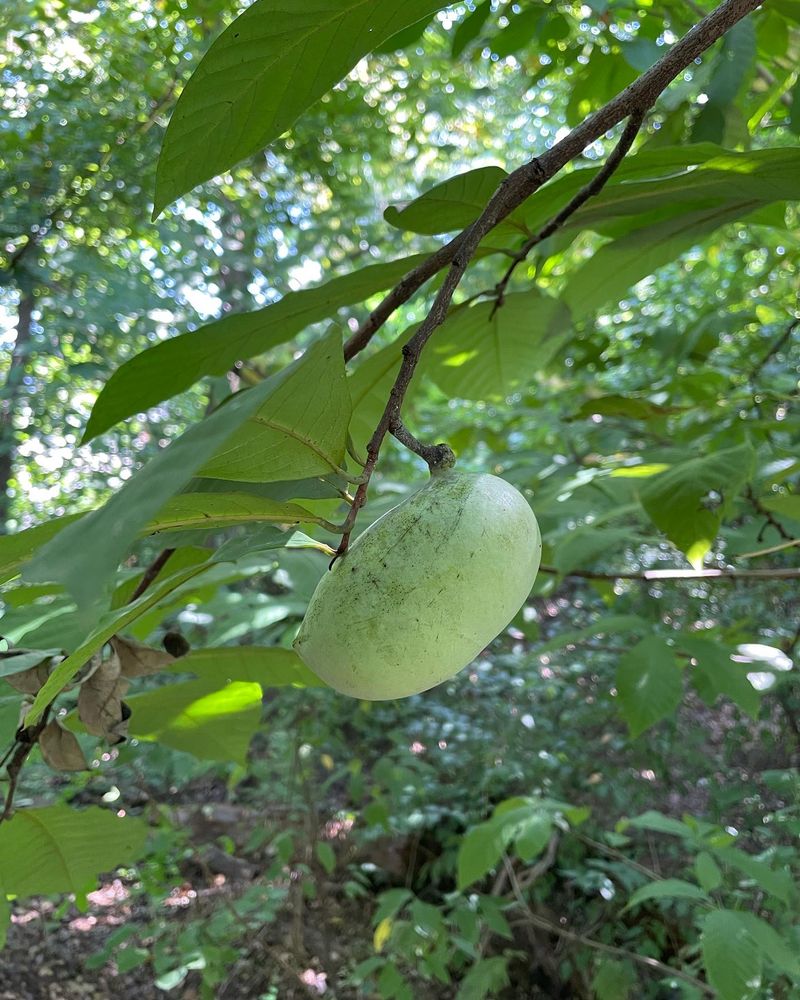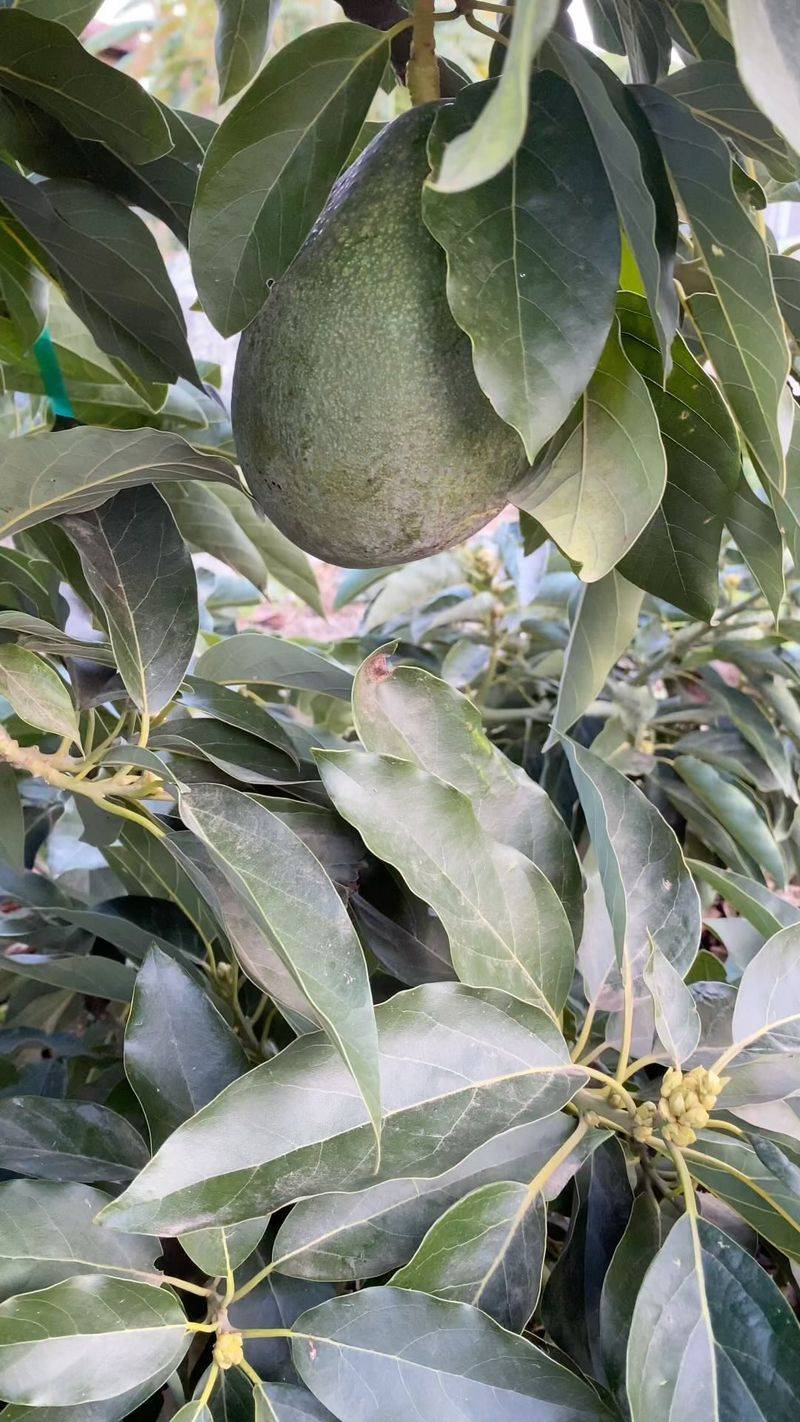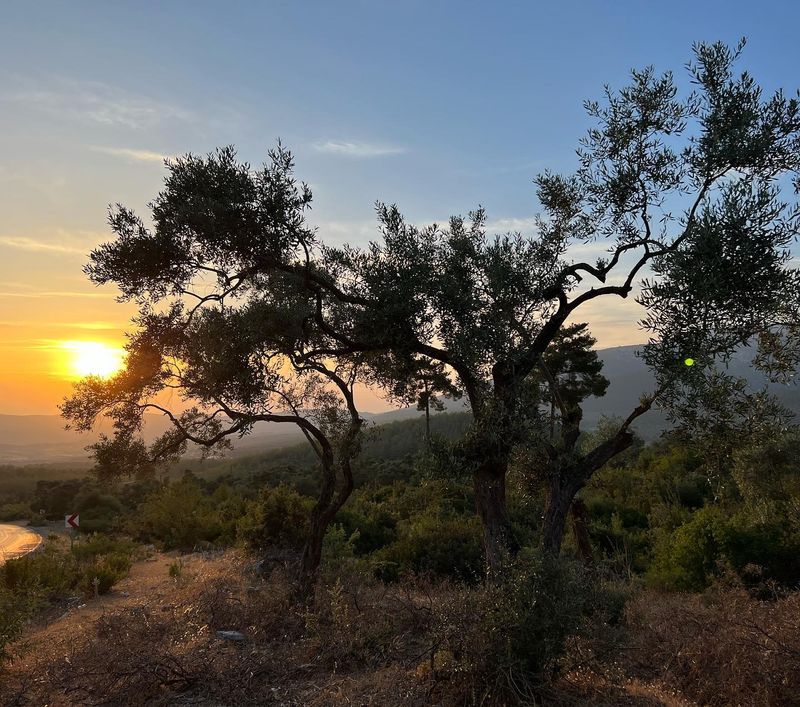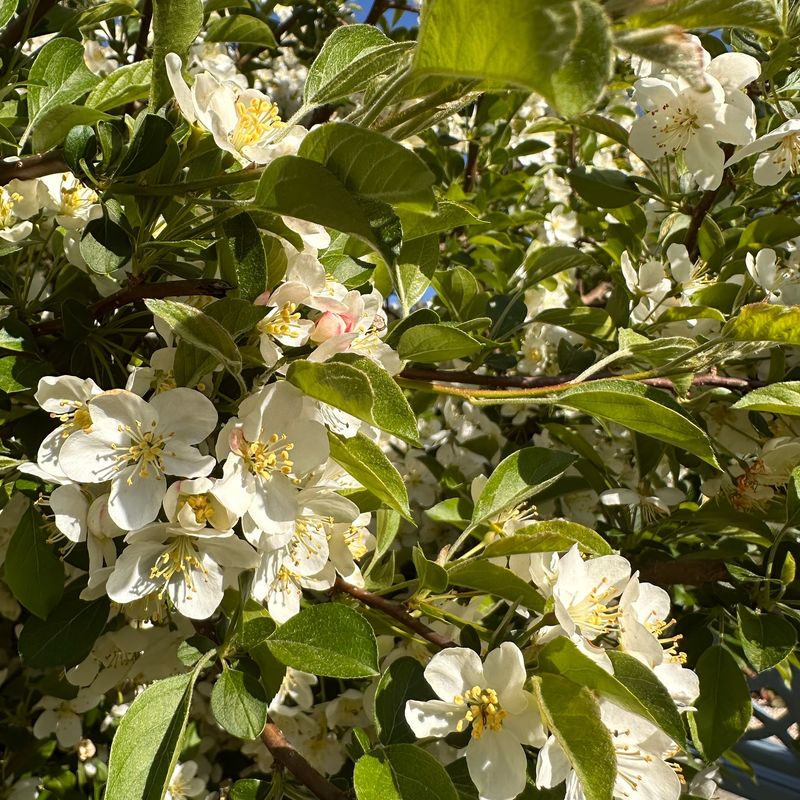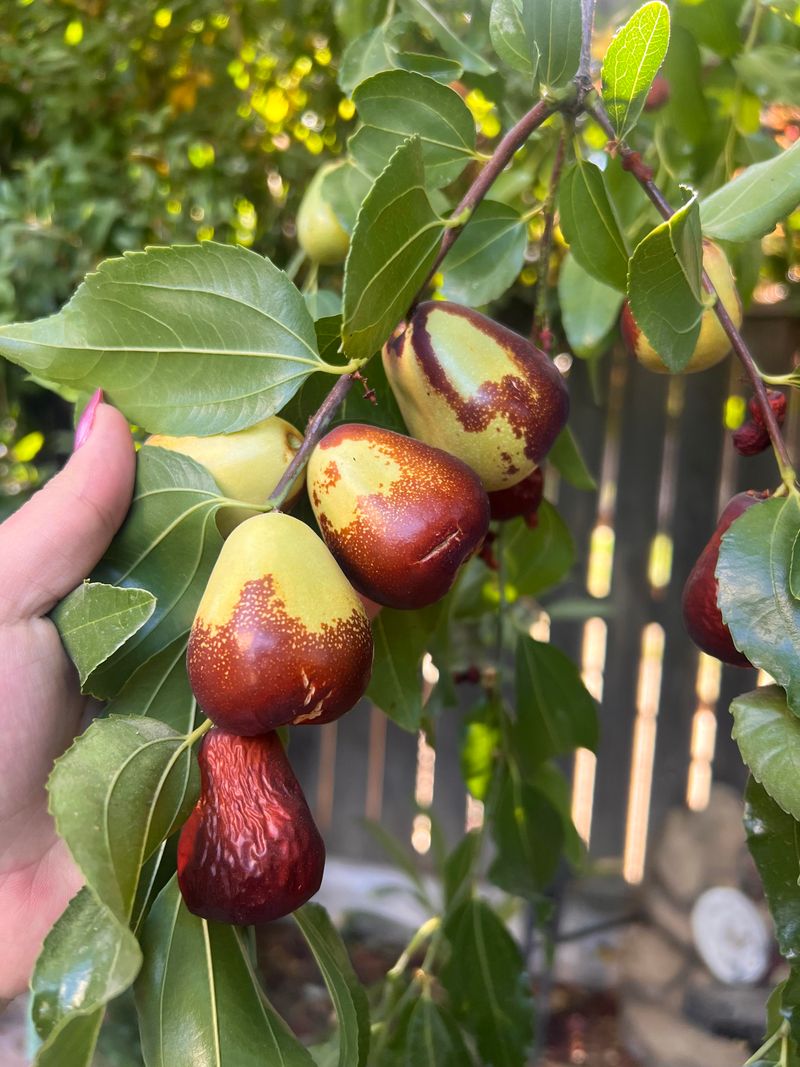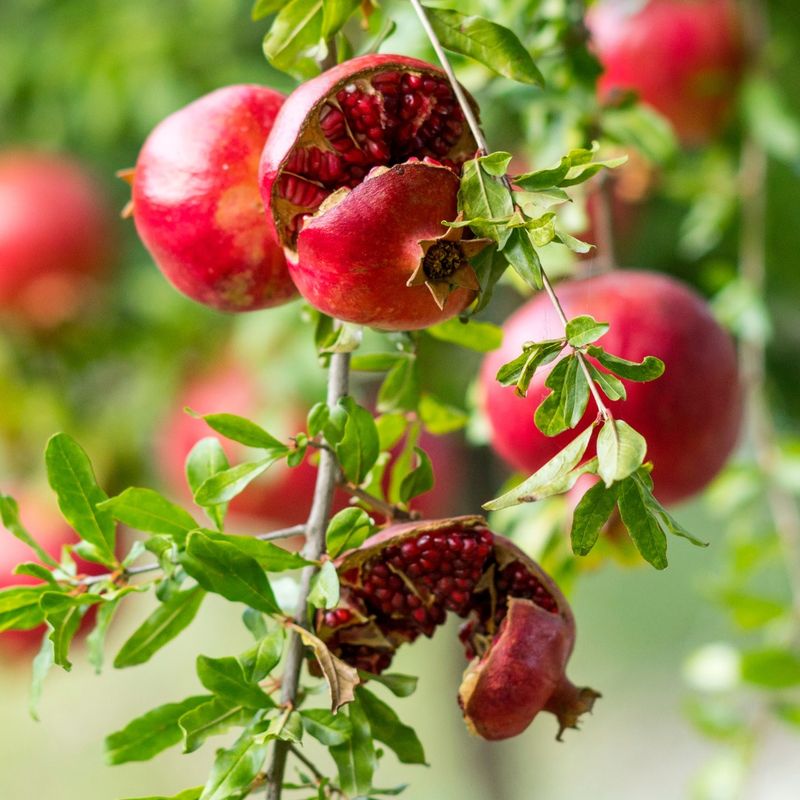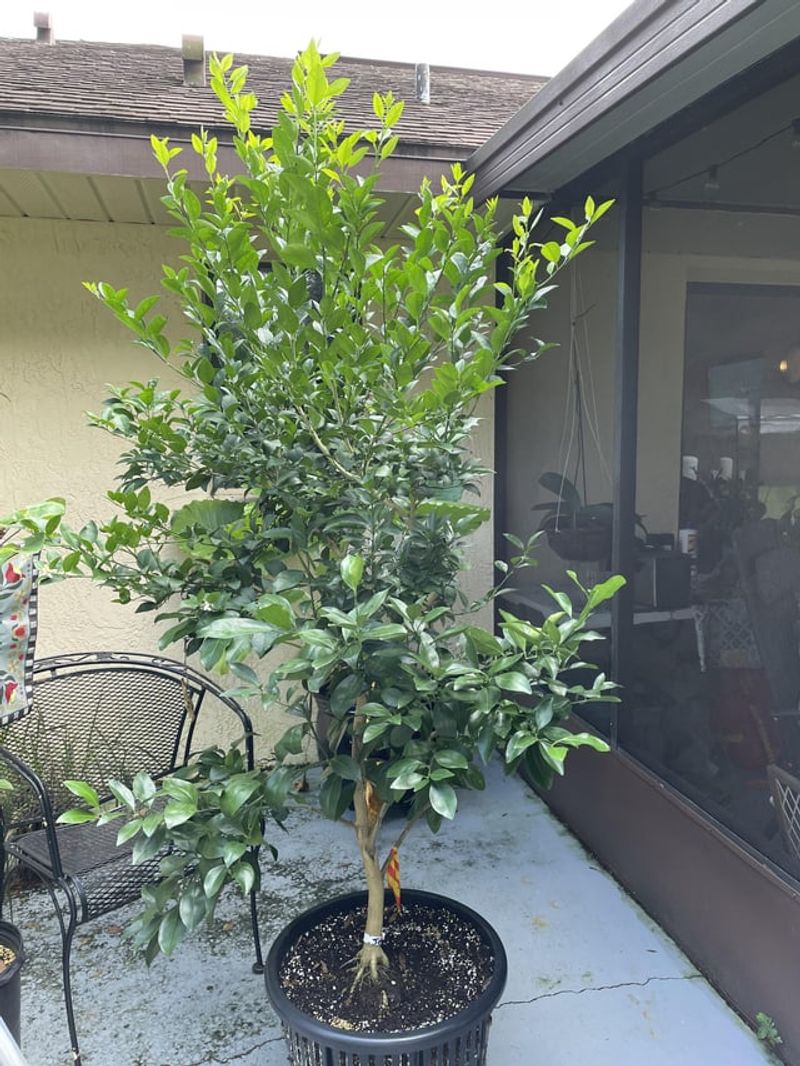Growing your own fruit trees transforms your yard into a personal orchard bursting with fresh flavors all season long. Beyond providing delicious harvests, these trees add beauty with their spring blossoms and create natural shade spots throughout your landscape. Whether you have a sprawling backyard or just a small corner plot, these expert-recommended fruit trees will bring joy, beauty, and bounty to your outdoor space for years to come.
1. Apple Trees: The Backyard Classic
Nothing beats plucking a crisp, juicy apple straight from your own tree. With thousands of varieties available, you’ll find one perfect for your climate—from heat-loving Annas to cold-hardy Honeycrisps.
Dwarf varieties make harvesting easy and fit into smaller spaces, while standard trees create magnificent shade canopies. Most apple trees need a pollination partner nearby to produce fruit, so consider planting two compatible varieties.
The versatility of apples—for fresh eating, baking, cider-making, and preserving—makes them the quintessential homestead fruit that keeps giving all autumn long.
2. Meyer Lemon: Citrus Perfection in a Pot
Sweetly fragrant with thin, golden rinds, Meyer lemons bridge the gap between lemons and mandarin oranges. Unlike their grocery store cousins, these beauties offer a milder, less acidic juice that transforms everything from water to baked goods.
Even northern gardeners can enjoy these trees by growing them in containers and bringing them indoors during winter months. Their glossy, deep green leaves and heavenly scented white blossoms make them ornamental standouts year-round.
A single mature tree can produce dozens of fruits throughout the year, especially if placed in a sunny, protected location.
3. Cherry Trees: Spring’s Sweet Promise
Cherry trees create the most magical spring displays with their clouds of pink or white blossoms. Choose sweet varieties like Bing for fresh eating or tart varieties like Montmorency for pies and preserves.
Many modern dwarf cherry varieties are self-pollinating, meaning you’ll get fruit with just one tree. Their relatively small size (15-20 feet tall) makes them perfect for smaller yards while still providing ample shade and beauty.
Birds love cherries too, so be prepared to share your harvest or invest in netting when the fruits begin to ripen in early summer.
4. Plum Trees: Prolific and Problem-Free
Plum trees reward even novice gardeners with bountiful harvests while requiring minimal maintenance. European varieties offer firm flesh perfect for drying into prunes, while Japanese types deliver juicy fruits ideal for fresh eating.
Their compact size makes them suitable for urban yards, and many varieties are self-fertile. The deep purple, red, or golden fruits hanging among the foliage create a stunning ornamental display in summer.
Resistant to many common fruit tree diseases, plums frequently produce heavy crops without the spray regimens other fruits might need—a genuine win for organic gardeners.
5. Peach Trees: Summer’s Fuzzy Delight
Few garden experiences rival biting into a sun-warmed peach picked moments before, juice running down your chin. These trees reach peak production quickly—often bearing substantial harvests by their third year.
Most peach varieties are self-pollinating, meaning a single tree will reward you with plenty of fruit. Their pink spring blossoms appear before the leaves, creating a stunning display that signals winter’s end.
For northern gardeners, look for cold-hardy varieties like Reliance or Contender that can withstand temperatures well below zero without losing their flower buds.
6. Pear Trees: Elegant and Long-Lived
Stately pear trees can grace your landscape for generations, with some specimens producing fruit for over 100 years. Their white spring blossoms, glossy leaves, and pyramidal shape make them attractive landscape features even before fruit appears.
Asian pears offer crisp, apple-like texture while European varieties provide the classic buttery pear experience. Most require cross-pollination, so plant two compatible varieties or graft multiple types onto one tree.
Remarkably disease-resistant compared to other fruit trees, pears often thrive with minimal spraying, making them ideal for organic gardening approaches.
7. Fig Trees: Mediterranean Charm
With their distinctive lobed leaves and unique growth habit, fig trees bring Mediterranean character to any landscape. Unlike most fruit trees, figs can produce two harvests yearly in warmer climates—a light early crop and a heavier main crop.
These ancient fruits require no pollination and grow beautifully in containers, making them versatile for patios and small spaces. Cold-hardy varieties like ‘Chicago’ and ‘Brown Turkey’ can survive winters as far north as zone 6 with proper protection.
The broad, tropical-looking foliage creates excellent summer shade, while the sweet fruits with their jammy centers offer flavors completely unlike anything found in grocery stores.
8. Persimmon Trees: Fall’s Fiery Reward
Persimmon trees create autumn magic when their round orange fruits hang like ornaments on bare branches after the leaves drop. American varieties offer small, intensely sweet fruits after frost, while Asian types produce larger, tomato-shaped fruits that can be eaten while still firm.
Their spectacular fall foliage transitions through yellows, oranges, and deep reds before revealing the fruit display. Most Asian varieties are self-pollinating, while American types typically need separate male and female trees.
Incredibly pest-resistant, these trees rarely need spraying and can thrive in soils where other fruit trees struggle—true low-maintenance beauties for the patient gardener.
9. Apricot Trees: Early Season Stars
Apricot trees kick off the fruit season with their early pink blossoms that often appear while snow still covers the ground. Their golden-orange fruits with blushed cheeks ripen in early summer, weeks before peaches and nectarines.
Compact by nature, apricot trees fit nicely into smaller yards while still providing ample harvests. Most varieties are self-fertile, though they produce more reliably with a pollination partner nearby.
The fruits’ perfect balance of sweetness and tartness makes them equally suited for fresh eating, drying, or preserving—versatility that justifies their space in any home orchard.
10. Mulberry Trees: Nature’s Bird Buffet
Mulberry trees produce buckets of blackberry-like fruits that keep coming for weeks during summer. Their rapidly dropping berries stain everything purple—a small price to pay for their incredible productivity and minimal care requirements.
Birds flock to these trees, making them perfect for wildlife-friendly gardens and potentially drawing feathered friends away from your other berries. Fruitless varieties exist for ornamental purposes, but the bearing types offer unique sweet-tart flavors for jams, pies, and fresh eating.
Fast-growing and adaptable to poor soils, mulberries quickly establish themselves as landscape anchors while providing welcome shade during hot summers.
11. Pawpaw Trees: America’s Forgotten Fruit
Pawpaws produce tropical-tasting fruits with flavors reminiscent of banana custard with mango and vanilla notes—all from a completely hardy native American tree. Their large, drooping leaves create a distinctly tropical appearance in temperate landscapes.
These understory trees naturally grow in partial shade, making them perfect for spots where other fruit trees would struggle. Plant at least two different varieties for cross-pollination, as the maroon flowers need pollen from genetically different trees.
Deer and most insects avoid pawpaws, making them remarkably low-maintenance once established—just be patient, as they can take 5-7 years to begin fruiting.
12. Avocado Trees: Green Gold for Mild Climates
Avocado trees bring year-round evergreen beauty to frost-free landscapes while producing one of the most nutritious fruits available. Their glossy, leathery leaves create dense shade, making them excellent landscape specimens even before considering their delicious harvests.
Cold-hardy varieties like ‘Mexicola’ and ‘Bacon’ can survive brief dips to 20°F, expanding growing possibilities beyond just tropical zones. Container growing with winter protection allows even northern gardeners to try their hand at these valuable fruits.
A single mature tree can produce hundreds of avocados annually—enough to keep guacamole flowing at every gathering while still having plenty to share with neighbors.
13. Olive Trees: Ancient Beauty for Modern Yards
Olive trees bring Mediterranean elegance to landscapes with their silvery-gray foliage that shimmers in summer breezes. Their gnarled, character-filled trunks develop over time, eventually becoming living sculptures that anchor garden designs.
Surprisingly cold-hardy down to 15-20°F when established, olives can grow far beyond traditional Mediterranean zones. Even in areas too cold for fruit production, fruitless varieties offer the same stunning ornamental qualities without the mess.
Incredibly drought-tolerant once established, these trees thrive with minimal watering—perfect for water-conscious gardeners looking to reduce landscape irrigation needs.
14. Crabapple Trees: Four-Season Beauty
Crabapple trees deliver year-round visual interest, starting with spectacular spring flower displays in white, pink, or deep rose. Their small fruits—technically edible and perfect for jellies—persist through winter, feeding birds and adding color to stark winter landscapes.
Modern disease-resistant varieties stay clean and attractive without spraying, making them low-maintenance landscape stars. Their moderate size (15-25 feet) fits perfectly into suburban yards while providing valuable shade and wildlife habitat.
As excellent pollinizers for standard apple trees, crabapples pull double-duty in the home orchard—enhancing fruit set on your eating apples while creating their own ornamental display.
15. Jujube Trees: Drought-Defying Delights
Jujube trees laugh at summer heat and drought that would wilt lesser plants. Also called Chinese dates, their crisp, apple-like fruits develop a date-like sweetness when dried, offering two completely different eating experiences from one harvest.
Their late-spring flowering cleverly avoids frost damage that plagues other fruit trees, leading to reliable annual crops. The small, glossy leaves create dappled shade rather than dense darkness, allowing underplanting with sun-loving perennials.
Nearly immune to pests and diseases, jujubes rarely need spraying or special care—just full sun and well-drained soil to deliver their sweet, antioxidant-rich fruits year after year.
16. Pomegranate: Jewels in the Garden
Pomegranate shrubs combine ornamental excellence with nutritional powerhouse fruits. Their trumpet-shaped orange-red flowers appear for months during summer, followed by leathery fruits that split to reveal ruby-like arils packed with sweet-tart juice.
Thriving in hot, dry conditions where other fruits struggle, pomegranates require minimal watering once established. Their naturally multi-stemmed form creates an attractive screening hedge when planted in a row, offering both privacy and harvests.
Cold-hardy varieties like ‘Russian Red’ can survive temperatures down to 0°F, bringing this ancient fruit’s possibilities to gardeners well beyond traditional warm-weather zones.
17. Citrus Cocktail Trees: Space-Saving Diversity
Grafting wizardry allows multiple citrus varieties to grow on a single tree—lemons, limes, oranges, and grapefruits all harvested from the same plant! These conversation-starting trees maximize variety while minimizing space requirements.
Perfect for containers or small yards, cocktail trees typically stay under 8 feet tall while delivering year-round interest through fragrant blossoms, colorful fruits, and glossy evergreen foliage. Different fruits ripen at different times, extending your harvest season across many months.
Northern gardeners can grow these treasures in wheeled containers, moving them outdoors for summer sunshine and indoors for winter protection—bringing tropical flair to any climate.

